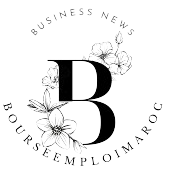Using Skill Assessment Tools to Bridge the Skills Gap Effectively
Business News
Introduction
The skills gap has become a significant challenge for organisations across industries. As technology advances and job roles transform, the demand for new competencies often outpaces the supply of qualified talent. To address this issue, businesses must adopt proactive strategies to identify and bridge these gaps. One of the most effective approaches is leveraging skill assessment tools and conducting a comprehensive skills gap analysis. These tools not only help organizations understand their current workforce capabilities but also provide actionable insights to align employee skills with business objectives.
Understanding the Skills Gap
The skills gap refers to the disparity between the skills employees possess and the skills required to perform their roles effectively. This gap can arise due to technological advancements, changes in industry standards, or a lack of continuous learning opportunities. Left unaddressed, it can lead to decreased productivity, higher turnover rates, and missed business opportunities. To tackle this, organizations must first identify the specific gaps within their workforce. This is where a skills gap analysis comes into play. By evaluating the current skills of employees against the desired competencies, businesses can pinpoint areas that require improvement and develop targeted training programs.
The Role of Skill Assessment Tools
Once the skills gap has been identified, the next step is to assess the existing capabilities of employees accurately. Skill assessment tools are designed to evaluate employees’ proficiency in various areas, from technical skills to soft skills. These tools provide objective data that can be used to make informed decisions about training, hiring, and career development. For instance, a company looking to upskill its IT team can use these tools to assess employees’ coding abilities and identify those who need additional training. By leveraging such tools, organizations can ensure that their workforce is equipped with the skills needed to thrive in a competitive landscape.
Bridging the Gap Effectively
Bridging the skills gap requires a strategic approach that combines assessment, analysis, and action. Start by conducting a thorough skills gap analysis to understand the specific needs of your organization. Next, use skill assessment tools to evaluate the current capabilities of your workforce. Based on the insights gathered, develop tailored training programs, mentorship initiatives, or hiring strategies to address the identified gaps. Regularly reassess and update your approach to ensure that your workforce remains aligned with evolving business needs.
Conclusion
In a world where the only constant is change, organizations must stay ahead of the curve by addressing the skills gap proactively. By leveraging skill assessment tools and conducting a comprehensive skills gap analysis, businesses can identify areas for improvement and take targeted action to bridge the gap. This not only enhances employee performance but also drives organizational success in the long run. Start your journey today and empower your workforce to thrive in the face of change.
